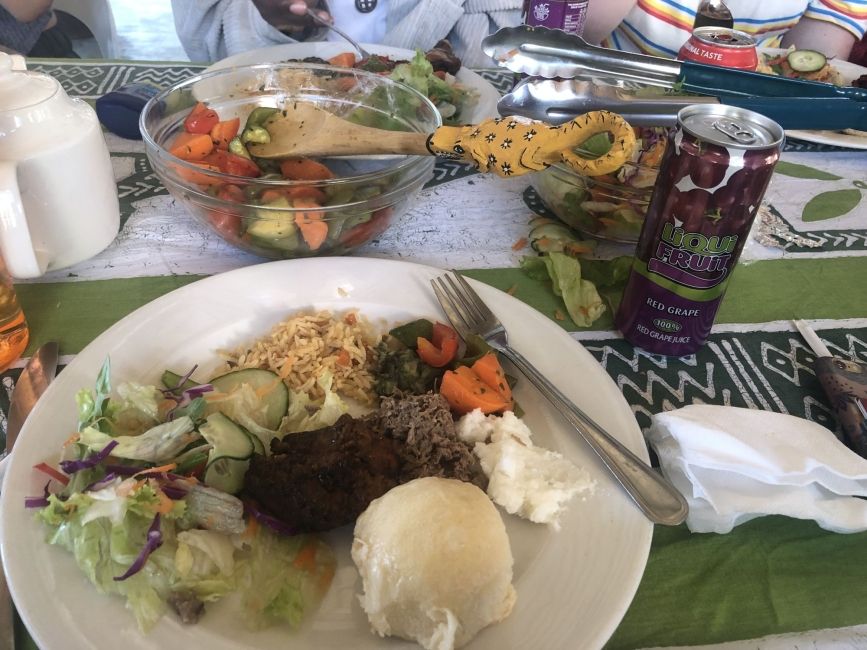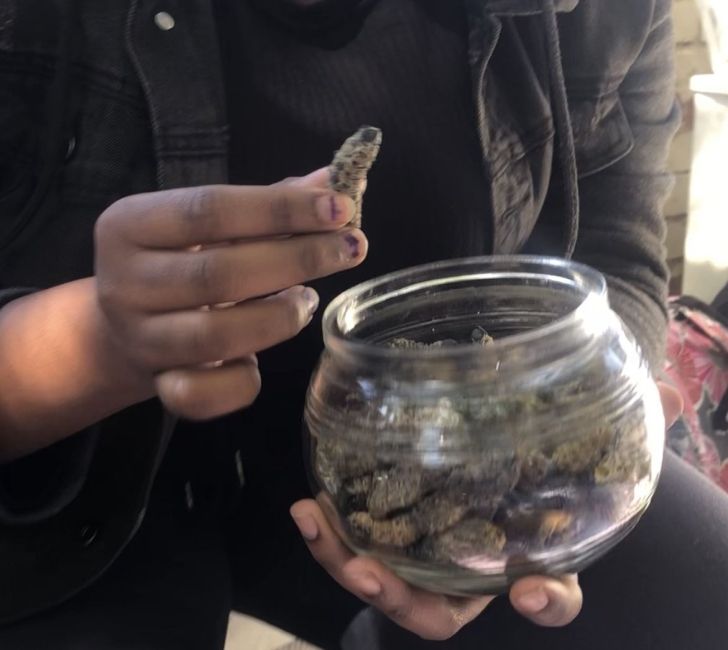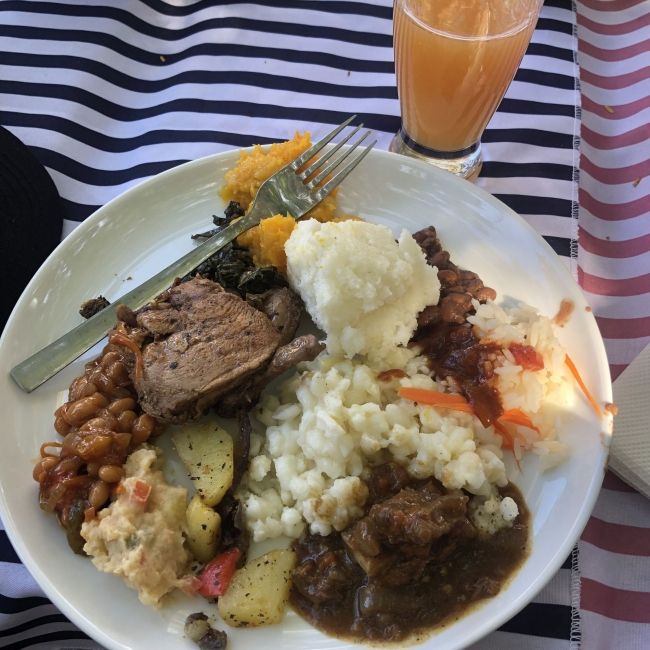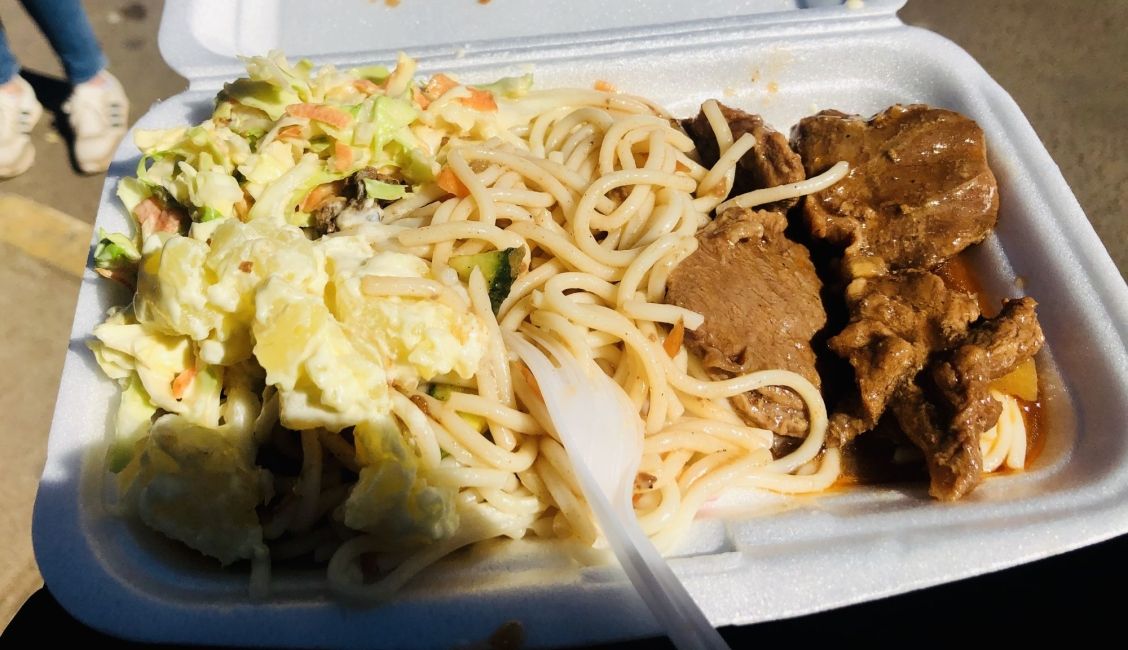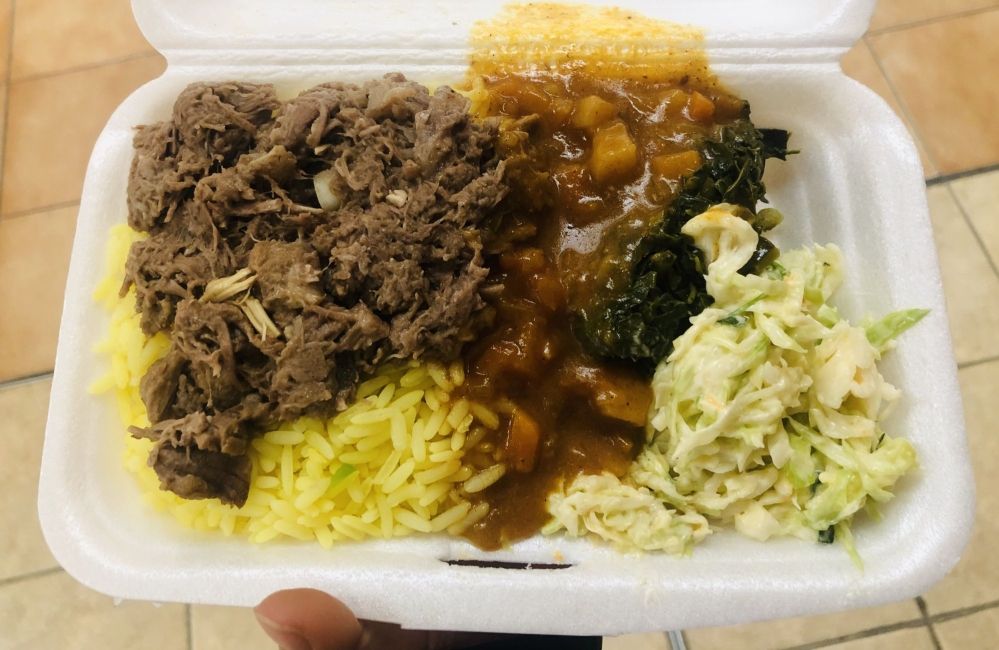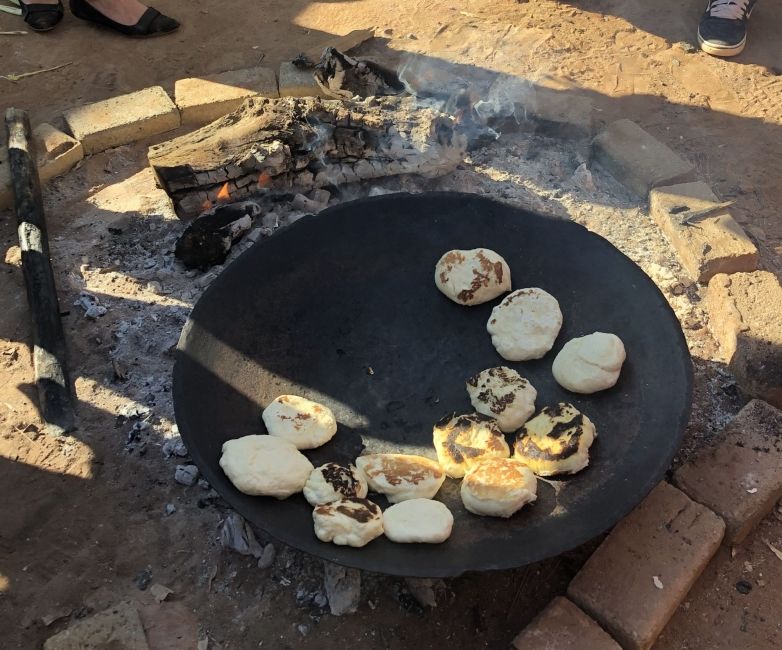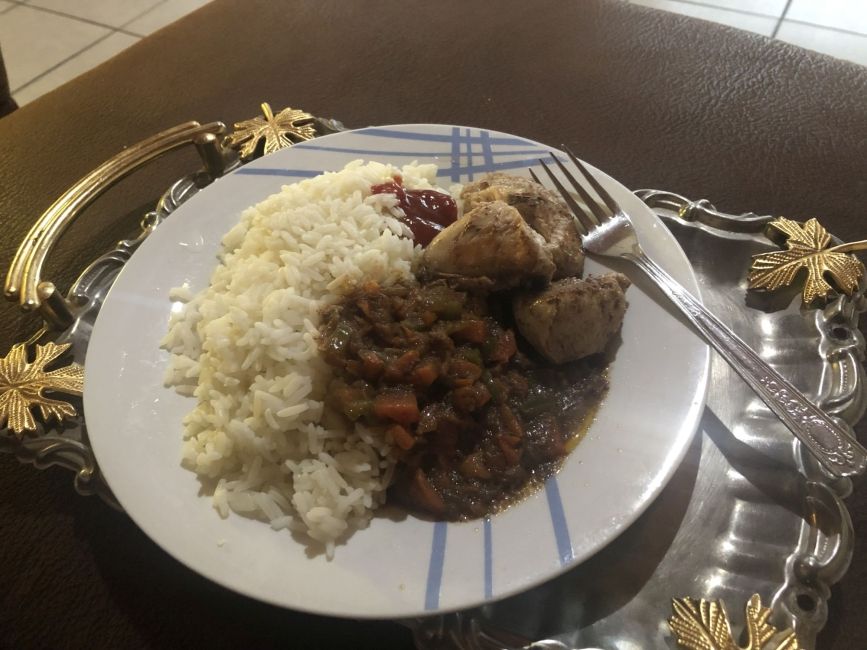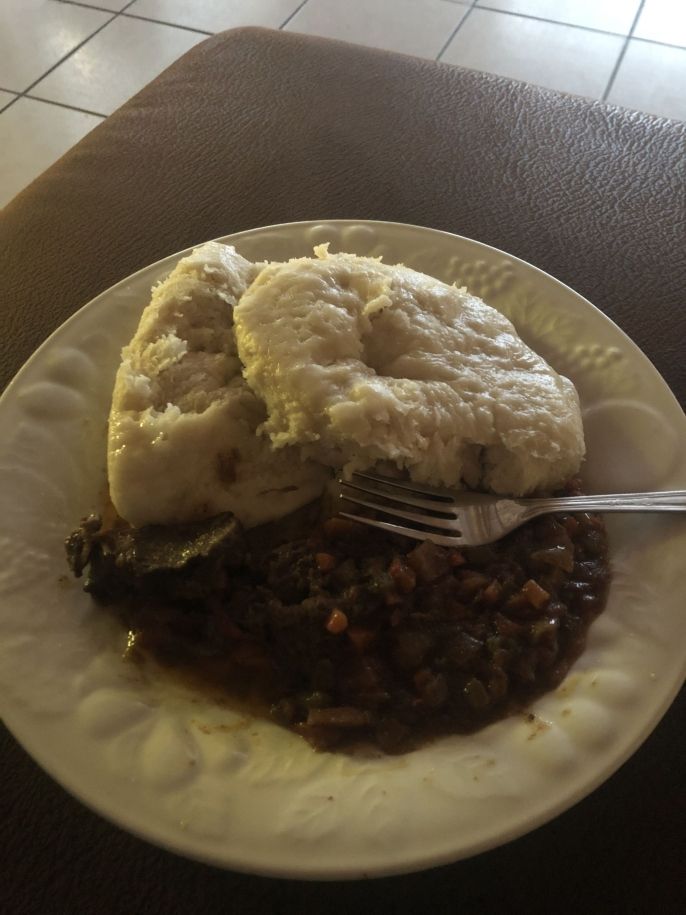What to eat in Botswana!
First thing first, I ate a caterpillar! Okay, it is not a fresh living worm. But still, I can taste the “nature” flavor in it. It’s like biltong mixed with dry leaves. I am not sure if I am willing to have another one but it is definitely a worthy experience! Actually, this caterpillar dish is a famous snack in Botswana called “mopane,” which is also the name of the tree those caterpillars are collected from. People dry the caterpillars and then season them with salt and spices. My local roommate is actually eating panes as snacks right now!
Looking at the general Botswana diet, you will find that people mainly rely on meat and maize meal, with little portion of vegetables. This diet structure is similar to many African countries where the arid climate limits plant growth. The only leafy green dish I have seen so far is called “morogo.” It is the leaves of the common cowpea (Setswana beans). The taste is quite bland and is usually eaten with beans and meat. My host mom in Kanye also added peanut butter to it to enrich its taste.
The most popular meat dish is called Seswaa. It is beef stew made by boiling meat with onions and peppers. It preserves the rich taste of the beef and it’s mashed up and easy to chew. Seswaa is usually accompanied by the maize meal “pap,” the dumplings, or the dried corn porridge “samp.” Oxtail and fried chicken are also popular dishes at ceremonies. I had oxtail at the night market and is was so tender and tasty! The high protein, starch, and calorie intake is probably due to the need for manual labor in the past. I guess this is why I do not feel hungry at all at night after my lunch.
Speaking of lunch, street food is a major part in my living experience. I lived in a dorm and need to prepare my own meals. Sometimes I will just go to the food stand outside the small gate. A box of street food costs 15 pula, which includes rice/pap/spaghetti, gravy, fried chicken, salads, and squash. I enjoyed it a lot!
I also really liked the Braai dinner at one of the local families. This home braai is like a potluck grill party where we brought American food and the locals cook Botswana cuisines. I noticed that they have a different kind of watermelons. It has lighter almost pink color and sweeter taste. Some studies even suggest that watermelons originate from Botswana!
In additional to main meals, there are also many options of snacks at the food court in the student center. I love the fat cakes! It is called magwinya. I usually bought it fresh and warm. It is basically a fried dough with a bit salty taste. There are ones with minced beef or chicken in it. It is definitely a filling snack. I also tried phaphatha this morning. It is like an English muffin with egg and cheese in it. Such snacks only cost around 5 to 10 pulas, but it can make you feel full for hours.
Another part of food culture is how people eat food here. We learned from the culture introduction talks that people enjoy sharing their food. Even for drinks, they would ask if you want to taste it. I still remembered that one night my local roommate knocked on my door and gave me her freshly made chocolate mint muffin. It was so great and I truly appreciate this amazing food culture in Botswana! It made me want to improve my cooking skills and share with them the taste of my home food.
Related Posts
Summer Community Public Health
This summer, the village of Dikgathong came alive with the vibrant and impactful Community Health Expo, organized by the Council on International Educational Exchange (CIEE) and the University of Botswana... keep reading
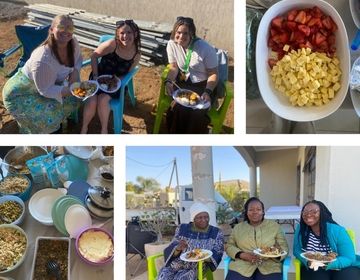
Botswana Braais: The Heartbeat of Social Unions
Authored by: Ruby Pitinyane Botswana, a country known for its quality beef production, vast landscapes and rich cultural heritage, holds a special place for the tradition of braais. A braai... keep reading
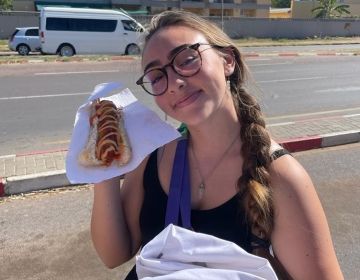
What I wish I knew before coming
Written by Kat Laird. My name is Katherine Laird and I was part of the Summer 2023 in the Community Public Health Program. Below is what I wish I knew... keep reading
